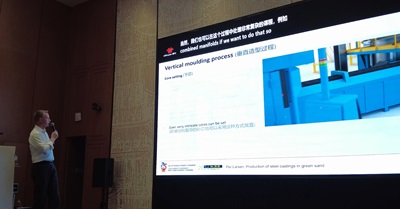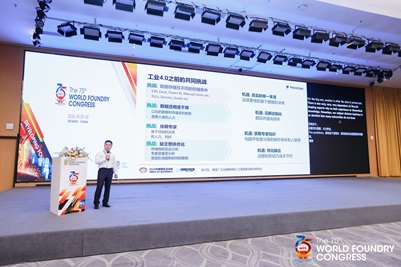Sustainabilityas a Competitive Advantage

Implementing Normalized Sustainable Development Strategies for Global Foundries
Lessons Learned by Norican Group in the Three Years Since Committing to SBTi: Measuring Initiatives, Approved Carbon Reduction Targets, Ongoing Global Sustainable Development Initiatives, and Partnerships with Clients. At the same time, showcasing how foundry enterprises leverage the latest digital technologies, efficient equipment, and supplier expertise to measure and reduce emissions across the entire supply chain. Sustainable development and finding a path to achieve net-zero emissions are crucial for the future of our industry and even the world.
Production of steel castings in green sand

Excellent Crack Resistance, More Stable and Reliable Castings
Green sand steel casting offers several significant advantages compared to coated sand steel casting. Firstly, the cost of green sand casting is relatively lower. Secondly, green sand casting exhibits superior crack resistance, which reduces quality issues caused by cracks during the casting process, thereby enhancing the stability and reliability of the castings.
Furthermore, green sand casting possesses the capability to produce castings with complex shapes. Depending on the geometric shape and production volume of the castings, both horizontal and vertical green sand molding product lines may be applicable. Whether you aim to produce around 100 cast steel pieces per hour or desire the highest DISAMATIC speed, DISA can provide your foundry with suitable equipment.
Process Optimization in Foundries Driven by IioT and AI

The Successful Digital Journey of Draxton with Monitizer® |DISCOVER
After introducing the Monitizer® | DISCOVER IIoT solution provided and supported by DISA, a global molding equipment supplier, Draxton's foundry in Barcelona, Spain, has reduced downtime resources and energy consumption. As a long-standing customer of DISA, Draxton is a global manufacturer of cast iron and cast aluminum components with operations in six countries across three continents. With an annual total casting capacity exceeding 6.2 million tons, it primarily produces complex components for brake systems, powertrains, and transmissions for the automotive industry in North America, Europe, and China.



